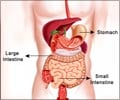Automatized do this sternous process could make their work and placement of dental implants much easier.

TOP INSIGHT
In simple cases - when the patient does not have any special conditions, such as osteoporosis.
To bring a solution to this problem, researchers at the Finnish Center for Artificial Intelligence FCAI, Tampere University Hospital, Planmeca and the Alan Turing Institute developed a new model that accurately and automatically shows the exact location of mandibular canals.
The model is based on training and using deep neural networks. The researchers trained the model by using a dataset consisting of 3D cone beam CT (CBCT) scans.
The model is based on a fully convolutional architecture, which makes it as fast and data-efficient as possible. Based on the research results, this type of a deep learning model can localise the mandibular canals highly accurately. It surpasses the statistical shape models, which have thus far been the best, automatized method to localise the mandibular canals.
In simple cases - when the patient does not have any special conditions, such as osteoporosis - the model is as accurate as a human specialist. Most patients that visit a dentist fall into this category.
Using Artificial Intelligence has another clear advantage, namely the fact that the machine performs the job equally fast and accurately every time. ’The aim of this research work is not, however, to replace radiologists but to make their job faster and more efficient so that they will have time to focus on the most complex cases,’ adds Professor Kimmo Kaski.
Source-Eurekalert
 MEDINDIA
MEDINDIA




 Email
Email







